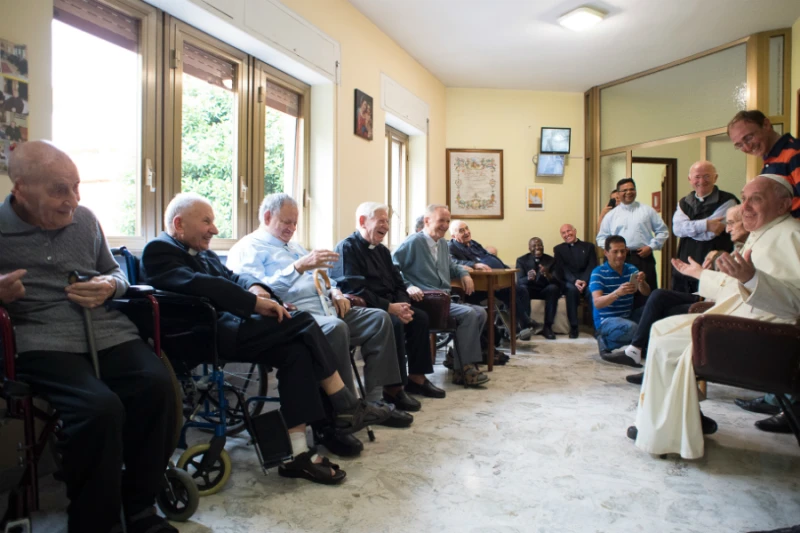
There’s more than one way to address the grave ecological crisis of our time. Perhaps your own preferred way might be to promote the cultivation of beauty, in one form or another.
Take the example of the philosopher Sir Roger Scruton. He has written, in his book How to Think Seriously About the Planet (Oxford University Press, 2012), that conservation is not simply a political concern, but also a cultural concern. That book has also been published under the title Green Philosophy, and its philosophical argument coheres with Scruton’s lifelong preoccupation with how beauty is related to the sacred.
Scruton is perhaps most famous for his BBC documentary on Beauty, which has taken on a life of its own on YouTube. Sir Roger speaks frequently on the topic of beauty, and his latest visit to the United States will find him in Chicago on October 29th for the Catholic Art Guild’s conference on Beauty and the Restoration of the Sacred.
That same conference begins with a choral Latin High Mass at St. John Cantius Church for the Feast of Christ the King, and then proceeds with talks by an artist, architect, and historian, and finally culminates in a sumptuous banquet with Scruton’s dinnertime discourse.
It must be observed that all of this is an excellent way to care for the environment. Contrary to the cliché that environmentalism is a crabbed political concern, with options limited to tree hugging or bottle recycling, the truth is considerably more expansive. In short, one can serve the cause well by cultivating the contemplation of beauty along with Sir Roger.
Take the example of Pope Francis and his encyclical Praise Be to You (Laudato Si’): On Care for Our Common Home. In his diagnosis of the root causes of our ecological crisis, the Pope speaks of “the globalization of the technocratic paradigm.” The technocratic paradigm dominates global economics, as corporations seek unlimited profit growth via never-ending technological progress.
As well as polluting the environment, this unrestrained pursuit of profit also pollutes our culture. Arguing that we need to “broaden our vision” (112), Francis predicts that “even the best ecological initiatives” will ultimately fail, unless we address the default logic of economic globalization by offering an alternative: “a distinctive way of looking at things, a way of thinking, policies, an educational programme, a lifestyle and a spirituality which together generate resistance to the assault of the technocratic paradigm.” (111)
In his encyclical, Pope Francis endorses “the desire to create and contemplate beauty” as salutary in its cultural effects, since “a kind of salvation” in fact “occurs in beauty and in those who behold it.” (112)
Beauty is urgently needed, writes the Pope, because today’s technological culture makes it “difficult to pause and recover depth in life.” Interestingly, to illustrate his point, Francis mentions the ugliness of modern architecture: “our megastructures and drab apartment blocks express the spirit of globalized technology, where a constant flood of new products coexists with a tedious monotony.” (113)
With this concern, the Pope makes common cause with architectural critics like Scruton, who offers a persuasive critique of modern architecture in his Beauty documentary, and who thereby inspires people like classical architect Duncan Stroik and architectural historian Dr. Denis McNamara to rally around the cause.
As Francis suggests, what we perhaps need most is “to slow down and look at reality in a different way, to appropriate the positive and sustainable progress which has been made, but also to recover the values and the great goals swept away by our unrestrained delusions of grandeur.” (114) And there is no better way to slow down, and to adopt such a contemplative mode, than to make beauty our central concern.
In one of his most recent books, The Ring of Truth (Random House, 2016), Sir Roger considers the philosophical significance of the attempts by Richard Wagner to use artistic beauty in the service of contemplating the mystery of the sacred.
For Wagner, religion contains deep truths that only enter into our consciousness by way of art. For Scruton, Wagner’s genius lies in never sacrificing concrete emotion to abstract ideas. In short, Wagner is a consummate artist precisely because he dares to contemplate spiritual reality in a truly serious way.
In order to find ultimate solutions to today’s economic and political injustices, our spiritual needs will need to be met. The concrete contemplation of these needs takes place in art. The most effective strategy for resisting environmental devastation, therefore, will have to involve the cultivation of beauty.
“You will listen and listen, but for you there is no understanding; you will watch and watch, but for you there is no perceiving. The heart of this people has become dull, their ears are slow to listen, and they keep their eyes shut, so that they may never see with those eyes, or hear with those ears, or understand with that heart, and turn back to me, and win healing from me.” (Matthew 13:14-15, trans. Msgr. Ronald Knox)
If you value the news and views Catholic World Report provides, please consider donating to support our efforts. Your contribution will help us continue to make CWR available to all readers worldwide for free, without a subscription. Thank you for your generosity!
Click here for more information on donating to CWR. Click here to sign up for our newsletter.






I’m a little uncomfortable with the writer’s passing over the issue of Wagner’s monstrous anti-semitism. That being said, however, his operas were and remain astounding works of art. His last opera, Parsifal (a favorite of the Holy Father’s), left me undone when I first heard it.